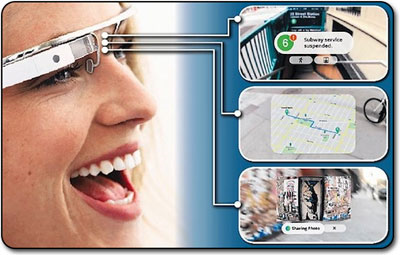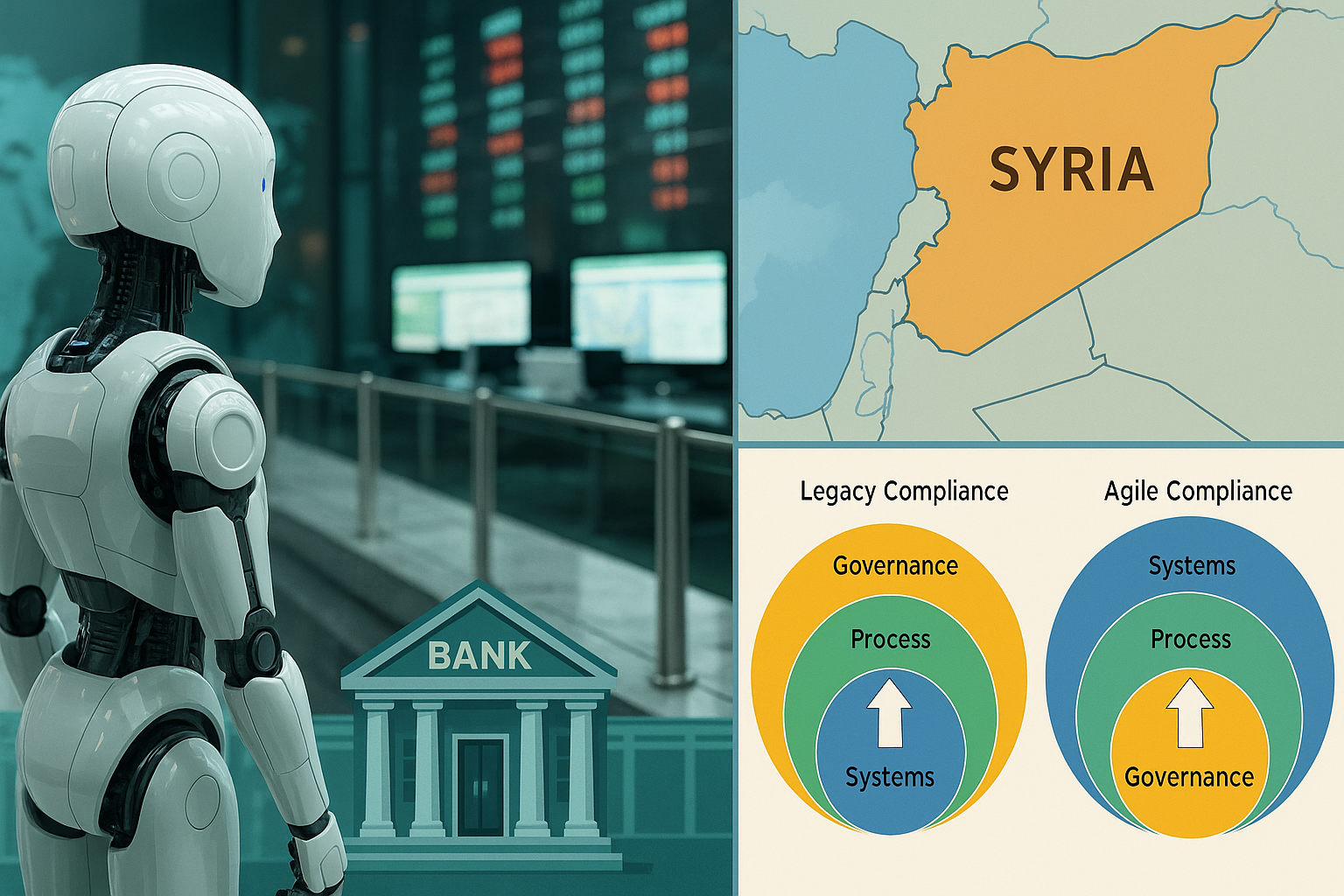Predictive Analytics & Wearable Computing
Predictive Analytics in the form of  predictive search (automated deduction or augmented reality) is now entering the mainstream.
predictive search (automated deduction or augmented reality) is now entering the mainstream.
A wide range of start-ups - Cue, reQall, Donna, Tempo AI, MindMeld, Evernote, Osito, and Dark Sky - and big companies like Apple, Google and Samsung are working on predictive search applications — aimed at enabling new tools that act as personal valets, anticipating what you need before you ask for it.
Google is the clear market leader and is continuously changing the landscape of search with predictive analytics. Apple is not sitting still either. I expect that Apple iWatch (wearable computing) is their attempt to create a wearable device similar to Google Glass that has similar predictive analytics capability built in.
Apple, Google, and Samsung are coming at the market with different angles. They see wearable as a complement to smartphones, paired via Bluetooth and apps. They will add new features and conveniences that weren’t possible before using their mobile device and OS capabilities.
Personalized Big Data is really becoming a viable idea around wearable computing and the basis for new platform wars. The new platforms will have to cover medical devices, sensor-enable wristwear, headset/glasses, tech-sensitive clothing. All of them are going to collect a lot of data, low latency analytics, and sophisticated data visualization.
Google – Suggest, Instant, Now, Glass
Simplicity changes behavior. Google launched the practice of predictive search back in 2004 with Google Suggest, which was then renamed to Google AutoComplete in 2010.
In 2010, Google Instant came on the scene, generating search results instantly as users type. Google’s Knowledge Graph in 2013 further enhances predictive search by predicting what type of information a user is searching for when they search a celebrity name “Brad Pitt” and generates specific related content right alongside normal search results.
Google Now is the next generation of predictive search, serving as a valet or personalized assistant that can predict your needs, wants, and deep desires. This is basically taking multiple buckets of data and intelligently connecting them to facilitate decisions….everyday data supported decision making. For some, Google Now delivers important information about the traffic on your morning commute, your updated flight itinerary, and the results of last night’s hockey game on your phone, without you even asking.
How does Google Now work….In order to provide relevant contextual info that relates to you and only you, Google uses your private data, accessing your location, Gmail, daily calendar, and other info in order to keep tabs on things like appointments, flight reservations and hotel bookings. Or auto-suggesting restaurants from the Zagat’s guide to have dinner at.
Google Now is evolving and forms a key foundational element for Google Glass, a head-mounted display. For instance, you are running thru the airport or train station wearing Google Glass, which uses its predictive powers to send a gate change or travel delay alert proactively to the display.
Google Glass is essentially augmented reality (AR). AR is the superimposition of a data display on a view of the natural world. This can be done either via special heads-up display (HUDs) or through the view screen of a smartphone (or watch). AR immerses the individual in the virtual world of data.
Google Strategy – leverage the convergence of search, mobile technology, wireless networks and cloud. Having Android on every smartphone allows Google to do extremely creative things enabling more and more of the augmented reality revolution going forward. Google is also in a unique position to know what information people are most interested in seeing and when they want it based on the giant volume of Web searches processed by the search engine daily. The different cloud services that it enables creates a web of rich data that is unsurpassed by few other firms. Facebook and Apple might be the closest in terms of knowledge about everyday you.
Google’s long term advantage can be the 1+GB wireless network it’s systematically building out thru out the U.S. The recent announce that Starbucks will have Google as the wifi service provider further enhances this last mile capability. AR will exponentially increase the need for wireless bandwidth and service quality. Imagine in 3-5 years sitting in a Starbucks and being able to consume entertainment and content via your Google Glass sipping on a latte.
Wearable Computing (and Predictive Analytics)
 At the big picture level…. Wearable computing seems to be new emerging frontier of predictive analytics.
At the big picture level…. Wearable computing seems to be new emerging frontier of predictive analytics.
According to the MIT Technology Review,
“After languishing in research labs for years, wearable computing is suddenly a hot topic in technology circles. The introduction of technologies such as the Pebble watch, fitness-tracking devices like Jawbone’s Up, and Google Glass, which is currently available to developers and is slated for public release next year, have ignited demand for more wearable gadgets.
In all, Juniper Research expects nearly 15 million wearable smart devices (including glasses, health and fitness monitors, and other devices) to be sold this year, amounting to $800 million, and nearly 70 million to be sold by 2017. But the field remains experimental, and it’s still not certain what form most wearable computers will end up taking.
Like Google, a number of startups are betting on our eyes and ears as the next frontier in computing. For example, Atheer Labs, a young company nestled right next to Google’s headquarters in Mountain View, California, is building software that will let users manipulate 3-D objects by means of computerized glasses (see “Why Google Glass Is Just the Beginning”). While Google Glass is currently limited to Google’s special eyewear, Atheer wants its software to be loaded onto lots of wearable devices.”
Nike’s Fuelband and the Garmin  Forerunner are the simple wellness applications aimed at vital signs, stress relief, fitness and heart monitoring. The heart is a primary generator of rhythm in the body, influencing brain processes that control the nervous system, cognitive function and emotion.
Forerunner are the simple wellness applications aimed at vital signs, stress relief, fitness and heart monitoring. The heart is a primary generator of rhythm in the body, influencing brain processes that control the nervous system, cognitive function and emotion.
The health marketplace is riding a new wave of patient surveillance, which includes proactively “managing” conditions. This is prompting new attention and focus on better solutions and re-engineering traditional approaches.
I expect we are going to see a convergence between the health metrics apps and general purpose living apps. I expect Apple to be one of the leaders in this area.
Apple is clearly the dark horse in the wearable race. It received a wearable patent in 2011. The “iWatch” patent filing suggests harvesting energy from the movement of the user’s arms and only coming out of standby mode when a sensor detects the device has been rotated to face a certain way. It adds that the use of an AMOLED (active matrix light emitting diode) display would also help since it can allow individual pixels to be turned off, allowing the watch to only activate the parts which are facing the owner’s eyes.
New Ways to Leverage Data…The next “new new” frontier is wearable computing. This will cover medical devices, sensor-enable wristwear, headset/glasses, tech-sensitive clothing. All of them are going to collect a lot of data and present a lot of data in real-time — a interesting use case for analytics.
Summary
Think about how uncanny it can be when a web site has ads that pertain to your search or a coupon prints out along with your receipt that matches something regularly on your grocery list. Now predictive search apps are taking that kind of automated deduction into real time.
The game is on. Scale and innovation are converging. Predictive analytics couple with wearable computing is going to be the next big mega-trend in my opinion. Watch this space!!!
Notes
- It’s amazing how Microsoft dropped the ball on Predictive Search enabled innovation (a textbook case of Innovator’s Dilemma).
- Apps That Know What You Want, Before You Do - New York Times, July 29, 2013
- Goldman Sachs – Big Data is a disruptive theme
- Apple’s Patent August 2011
Related articles
- Predictive Search: There’s a downside with the upside (katherinedanesi.com)
- Google Now + The Invasion of Predictive Technology (siliconangle.com)
- New Google Search Feature Predicts What Users Are About to Search For(sunnysideupnews.org)
- Mindreader: Google Searching For What You Need (daily-download.com)
- Why Google Glass costs $1,500 now and will likely be around $299 later (gigaom.com)
- Wearable Computing Goes Mainstream – Consumers Are Already Snapping Up Smart Watches And Wristbands (businessinsider.com)
Posts by Tag
- big data (41)
- advanced analytics (38)
- business perspective solutions (30)
- predictive analytics (25)
- business insights (24)
- data analytics infrastructure (17)
- analytics (16)
- banking (15)
- fintech (15)
- regulatory compliance (15)
- risk management (15)
- regtech (13)
- machine learning (12)
- quantitative analytics (12)
- BI (11)
- big data visualization presentation (11)
- AML (10)
- community banking (10)
- social media (10)
- AML/BSA (9)
- Big Data Prescriptions (9)
- analytics as a service (9)
- banking regulation (9)
- data scientist (9)
- social media marketing (9)
- financial risk (8)
- innovation (8)
- marketing (8)
- regulation (8)
- Comminity Banks (7)
- data analytics (7)
- money laundering (7)
- AI (6)
- AML/BSA/CTF (6)
- Big Data practicioner (6)
- CIO (6)
- Digital ID-Proofing (6)
- Performance Management (6)
- agile compliance (6)
- banking performance (6)
- digital banking (6)
- visualization (6)
- AI led digital banking (5)
- AML/BSA/CFT (5)
- KYC (5)
- data-as-a-service (5)
- email marketing (5)
- industrial big data (5)
- risk manangement (5)
- self-sovereign identity (5)
- verifiable credential (5)
- Hadoop (4)
- KPI (4)
- MoSoLoCo (4)
- NoSQL (4)
- buying cycle (4)
- instrumentation (4)
- mathematical models (4)
- sales (4)
- 2015 (3)
- bitcoin (3)
- blockchain (3)
- core banking (3)
- customer analyitcs (3)
- direct marketing (3)
- identity (3)
- manatoko (3)
- model validation (3)
- wearable computing (3)
- zero-knowledge proof (3)
- zkp (3)
- Agile (2)
- Cloud Banking (2)
- FFIEC (2)
- Internet of Things (2)
- IoT (2)
- PPP (2)
- PreReview (2)
- SaaS (2)
- Sales 2.0 (2)
- The Cloud is the Bank (2)
- Wal-Mart (2)
- data sprawl (2)
- digital marketing (2)
- disruptive technologies (2)
- email conversions (2)
- mobile marketing (2)
- new data types (2)
- privacy (2)
- risk (2)
- risk managemen (2)
- virtual currency (2)
- 2014 (1)
- 2025 (1)
- 3D printing (1)
- AMLA2020 (1)
- BOI (1)
- DAAS (1)
- Do you Hadoop (1)
- FinCEN_BOI (1)
- Goldman Sachs (1)
- HealthKit (1)
- Joseph Schumpeter (1)
- Manatoko_boir (1)
- NationalPriorites (1)
- PaaS (1)
- Sand Hill IoT 50 (1)
- Spark (1)
- apple healthcare (1)
- beneficial_owener (1)
- bsa (1)
- cancer immunotherapy (1)
- ccpa (1)
- currency (1)
- erc (1)
- fincen (1)
- fraud (1)
- health app (1)
- healthcare analytics (1)
- modelling (1)
- occam's razor (1)
- outlook (1)
- paycheck protection (1)
- personal computer (1)
- sandbox (1)
Recent Posts
Popular Posts
Every community bank CEO now faces unprecedented...
On May 13, 2025, the U.S. government announced...
In our continuing exploration of banking...



